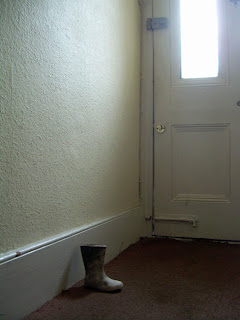Following the introduction of a spatial art competition for British Land, I've been spending time at the site at Regent's Place in Euston. It's difficult not to be struck by the apparent contrast, in wealth and lifestyle, of those who work on site and the inhabitants of the nearby residential area. The site developers want local residents to use Regent's Place, but to an extent this seems unrealistic.
There are definite formal connections in the architecture: Both the site and adjacent housing estate have a strong vertical presence. It is interesting, though, that the context of their height gives them very different connotations - The 'skyscrapers' of modern materialsemanating notions of professionalism and wealth, the 'high rise flats' signifying associations with lower class poverty.
Following research at Camden Local History Library in Holborn, I've found that throughout the 19th and 20th centuries Regent’s Place was occupied by a mixture of working class dwellings and sites of industry and manufacture. There has long since been a confluence of classes in the area, however, with the site having been only streets away from the intended ‘well-to-do’ crescents and squares closer to Regent’s Park.
Lost Streets: The above image is courtesy of Camden Local History Library.





















